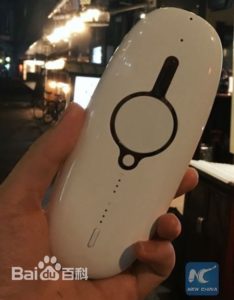Travellers from mainland China took more than 62 million outbound trips in the first half of 2017 with an increase in preference for self-guided tours, as per the China Tourism Academy. Existing forecasts suggest that Chinese outbound tourism will grow to 200 million trips by 2020, with overseas travel spend to hit US$429 billion the following year.
With that in mind, Chinese online travel agency Ctrip joined forces with Internet and voice recognition giant Baidu to launch a new pocket translation device for use by Chinese tourists travelling overseas. The handy gadget connects to the internet through an embedded SIM card that can work in more than 80 countries and regions, and also doubles as a portable WiFi hotspot.
According to Yu Xiaojiang, a Ctrip senior manager in charge of overseas travel, the yet-unnamed portable translation gadget can help break down language barriers that phone apps are still slow to address.

Users can talk into the oval-shaped gadget while pressing a button in the center. Through online connectivity, the device will access artificial intelligence (AI) and deep learning technology in order to decode speech into the target language in real-time.
The travel and hospitality industries stand to benefit from this, as hotels around the world have been seeing a surge in the number of visitors from China. Access to quality translations on-the-go will only speed up the growth of Chinese business. At the very least, the portable translation device provides the ability to communicate at the touch of a button, which is expected to encourage more middle-aged and elderly Chinese to travel abroad.
According to Wang Haifeng, vice president of Baidu, the pocket translator currently supports translation between Chinese and English, with service for other languages to be added in the future. Announcements on pricing or worldwide availability are as of yet forthcoming.
While this is not the two companies’ first joint project – Ctrip and Baidu rolled out a translation app in early 2017 that allows tourists to translate English text into Chinese using phone cameras – if plans push through it will be their initial foray into the Japanese market, where they plan to introduce the device in spring 2018.



 share
share







































